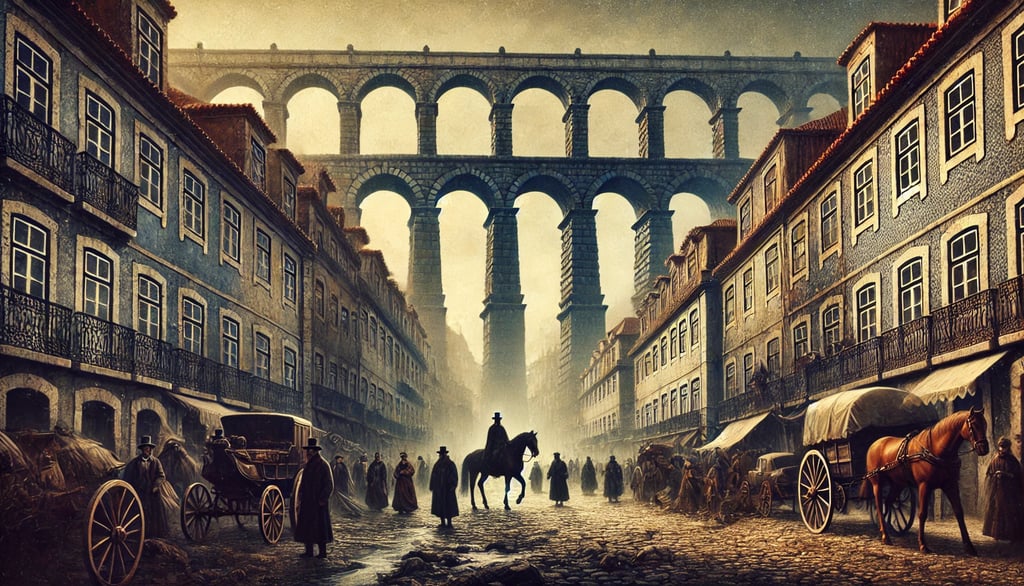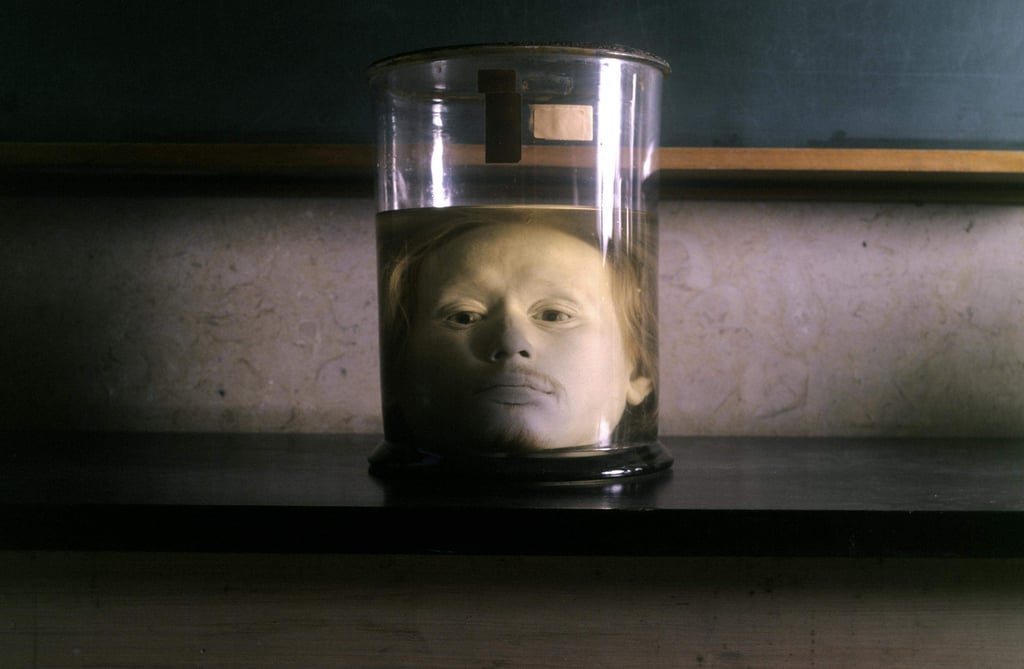Diogo Alves, the Aqueduct Assassin
Lisbon, a city of promise, stood before him, her arms outstretched, glittering with the gold of empire. The great aqueduct that stretched across the valley of Alcântara shimmered in the sunlight, a symbol of progress, of wealth, and of power. But for Diogo, it would become a stage for murder.
TALES
Writen by Nelson Viegas
5/8/20244 min read


In the early days of the 18th century, Lisbon was a city haunted by shadows, where the cobbled streets echoed the whispers of those who lived in fear. It was a time when the city's grandeur, built on the wealth of Brazil, stood in stark contrast to the growing desperation of its poorest inhabitants. Among them was a man whose name would be etched into the annals of infamy: Diogo Alves, known to all as o Pancadas, the madman, the butcher of the aqueduct.
Diogo Alves arrived in Lisbon as a boy of ten, his origins steeped in the bleakness of Galicia. Born Diego Alvarez, the son of poor farmers, he had crossed the mountains in search of a better life, one where the cold winds of his homeland would not sting so cruelly. Lisbon, a city of promise, stood before him, her arms outstretched, glittering with the gold of empire. The great aqueduct that stretched across the valley of Alcântara shimmered in the sunlight, a symbol of progress, of wealth, and of power. But for Diogo, it would become a stage for murder.
In those early days, he worked as a servant in the grand houses of the nobility. His diligence and hunger for approval earned him favor, and soon he rose through the ranks, becoming first a coachman's assistant and then a coachman himself. But beneath the surface of this ambitious servant lurked darker impulses. The city that had promised him wealth and security instead fed him poison, dripping slowly into his soul. It was not long before he fell into the grasp of gambling, of drink, and of women—one woman, in particular, a siren of the streets: Gertrudes Maria, known as Parreirinha.
Gertrudes was no ordinary woman. She was a widow with children, her beauty long faded, but her cunning sharp as a blade. She recognized in Diogo the same hunger that drove her, and soon the young man was hopelessly ensnared, a slave to her whims. He spent his meager earnings on drink and gifts, desperate to prove his worth to her. But love, in its most twisted form, demands sacrifices. And Diogo, under Gertrudes’ sway, was willing to make them.
The first whispers of crime came quietly. Small thefts, an assault here, a robbery there, nothing to rouse the suspicion of the city's distracted constabulary. But it was not enough. The gnawing need for more, the constant pressure of his debts and desires, pushed Diogo to the edge. It was on the aqueduct, that great stone serpent that wound through the city, that his descent into true madness began.
The aqueduct was a marvel of engineering, but it was also a place of danger, its heights daunting, its length a lonely stretch where travelers could be easily isolated. Diogo knew it well. He had crossed it many times, his keen eyes noting the foot traffic of merchants and peasants alike. He watched as they passed, their coin purses jingling, their steps hurried, unaware of the fate that awaited them. For Diogo had a plan.
Under the cover of darkness, he stole a set of keys from a careless guard at the Mãe d'água. The keys gave him access to a hidden chamber within the aqueduct, a place from which he could strike without being seen. And so, one night, as the city slumbered, Diogo Alves became the assassin of the aqueduct.
The first man he killed was a merchant, a simple peddler of goods who had stayed too late at market. Diogo approached him from behind, his knife cold and sharp. "Alto! Your purse or your life," he snarled, pressing the blade to the man's back. But the merchant, sensing his attacker’s desperation, turned, and in that moment recognized him. "Ah! The Parreirinha's man!" he cried, sealing his fate. Diogo, panicked at being identified, stabbed the man in the chest, his blade sinking deep. With a brutal shove, he hurled the merchant over the edge of the aqueduct. Sixty-five meters he fell, his body twisting in the air before it shattered on the stones below.
From that night forward, Diogo’s killings became a grisly routine. His victims—merchants, peasants, and travelers—fell from the aqueduct with terrifying regularity. Some whispered that the aqueduct was cursed, that the spirits of the dead called others to join them. But the truth was far darker. Diogo reveled in the ease of it, in the way the city’s people shrugged off the deaths as suicides or accidents. His heart, once burdened by poverty and shame, grew cold and cruel. The aqueduct had become his domain, and those who crossed it his prey.
It was not long before Diogo's crimes extended beyond the aqueduct. With Gertrudes at his side, he formed a gang of thieves and murderers, their loyalty bound by blood and fear. Together, they terrorized the city, robbing the homes of the wealthy, striking fear into the hearts of those who dared to resist. Among his followers were men like Beiço Rachado, João das Pedras, and Pé de Dança—names whispered with dread in the taverns of the lower city.
But it was the massacre at the house of Dr. Pedro de Andrade that would be their undoing. Lured by the promise of wealth, Diogo and his gang stormed the house, slaughtering the doctor’s family in cold blood. Their crime shocked the city, the brutality of it too great to ignore. The streets buzzed with talk of the fiend behind the murders, and soon the authorities were closing in.
Manuel Alves, a member of Diogo’s gang and a distant cousin to Diogo, broke under pressure. He betrayed them all, leading the police to their lair in Arroios. There, on a cold October morning in 1839, Diogo Alves was finally captured. His trial was swift, the evidence overwhelming. On the gallows in 1841, Diogo met his end, but not before his head was severed and preserved for study. Scientists hoped that by examining the skull of this monster, they might unlock the secrets of his madness. But no such answers were found.
To this day, Diogo Alves’ head remains preserved in the Faculty of Medicine in Lisbon, a grim reminder of the horrors he wrought. Visitors may gaze upon it, searching for clues in the cold, glassy eyes of the man who ruled the aqueduct with death. And though his body lies in the ground, the shadow of Diogo Alves still haunts the city, a specter of a time when the line between man and monster blurred beyond recognition.


Book now!
Contacts
+351 936 651 524
info@storyandtales.com




